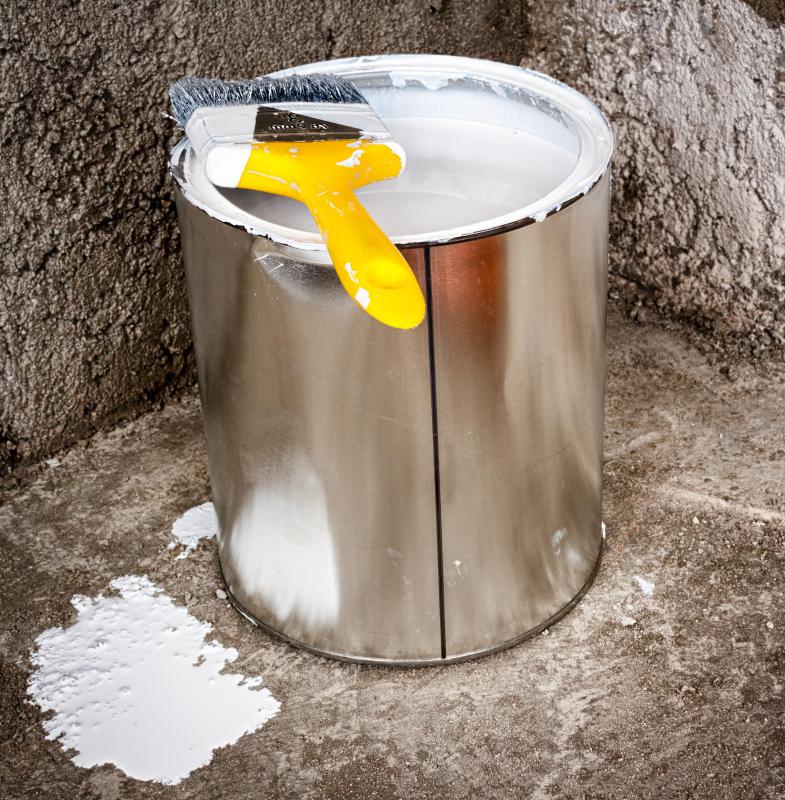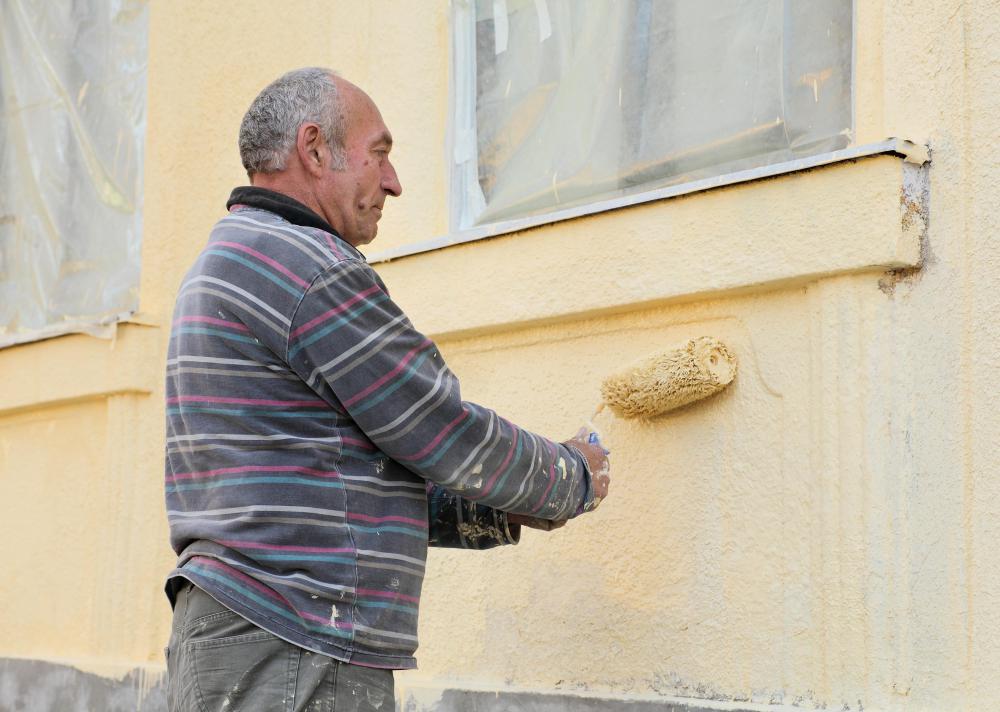At HomeQuestionsAnswered, we're committed to delivering accurate, trustworthy information. Our expert-authored content is rigorously fact-checked and sourced from credible authorities. Discover how we uphold the highest standards in providing you with reliable knowledge.
What is Masonry Paint?
Paintable surfaces include masonry, wood, metal, plastic/vinyl, and composites. In the case of masonry paint, the basic principle is the same, protection and decoration of a masonry surface. A masonry surface is generally considered concrete, brick and mortar, stucco, cement block, and sandstone. Because masonry ordinarily presents a much more porous surface than, for example, wood or metal, masonry primers and paint must be formulated to effectively counter porosity.
Additionally, masonry, because of its susceptibility to moisture absorption and retention, is not an especially good insulating material. Thus, masonry paint must provide an insulating value to the substrate. Breathability of the paint is crucial to the effectiveness of the masonry coating in allowing trapped moisture to escape outside the surface while preventing more moisture from entering.

Masonry paint may be an oil-based, or alkyd, coating, or it may be latex, or water-based. Commonly, a masonry primer will be oil-based, and the topcoat will be latex. Home masonry do-it-yourselfers note: a latex product may be applied over an oil-based product, but the reverse is not a good idea.
Masonry surfaces present a number of unique surface-preparation challenges including flaking, dust, and efflorescence, or chalking, as well as the common problem of expansion and contraction. Proper preparation of the masonry surface is very important to the effectiveness of both oil-based or latex masonry primers and paints. Products specifically designed to clean and etch masonry surfaces must be properly applied, while cracks, deterioration, and defects in the surface must be repaired before painting.

Numerous manufacturers of masonry paints and primers boast of the addition of poly vinyl acetates (PVA) to the product to increase adhesion properties. Others claim added stabilizers, or binders designed to hold together flaking, crumbling, and dusty masonry that characterize older, deteriorating surfaces. Some masonry paint manufacturers offer both additives together. However, there seems to be some contention as to how effective these stabilizing and binding compounds can be, and whether they present more long-term problems than solutions.

In simplistic terms, then, masonry paint is a coating and sealant that must be elastic, breathable, and durable. It must not dry too quickly, remaining wet enough to be brushed, rolled, or sprayed directly onto properly prepared masonry with a uniform consistency. Assuming the proper masonry preparation and priming has been done, then any quality exterior paint, being essentially a weatherproof paint, will work as masonry paint.
AS FEATURED ON:
AS FEATURED ON:














Discussion Comments
Can you use masonry primer to cover up interior plaster walls damaged by wallpaper/wallpaper glue?
Do I have to paint masonry or can I stain it instead? I would like to keep the look of the stone, but add a little color that is not as drab as the grey so common of concrete. I would like my masonry wall to match my house somewhat. Additionally, is there any product that makes it easy to remove graffiti from my wall? Every once in a while some kids spray paint walls in the neighborhood so whatever I use to treat my walls needs to be easy to clean graffiti from.
@cougars- It sounds like the painters you hired did not prep the area very well. I used to paint houses for a living, and one of the most important parts of painting is proper preparation of the area to be painted. When applied properly, exterior masonry paint should last for quite some time.
One piece of advice that I would give to you is to rent a pressure washer and thoroughly clean the area. Once it is completely dry, take a clean brush or broom and brush any dust off that may have settled while it was drying. You should also patch any loose masonry and weak spots in the wall so it does not crumble and cause the paint to peel in the future.
This has been a very helpful article. I have a cinder and cement wall in my back yard that is in need of a new layer of paint. I need to find the best masonry paint available, and I am also planning on doing the job myself. We paid a paint crew to paint our fence (actually it was forced on us by the HOA when the wall was built) three years ago. The paint is peeling all over the place and the chips are all over my garden along the walls edge.
By looking at it, it does not look like the paint crew used a base coat of paint. It looks like they simply painted the wall with exterior latex paint without even washing it first. I will follow the directions in this article and hopefully have the problem solved for a while.
Post your comments